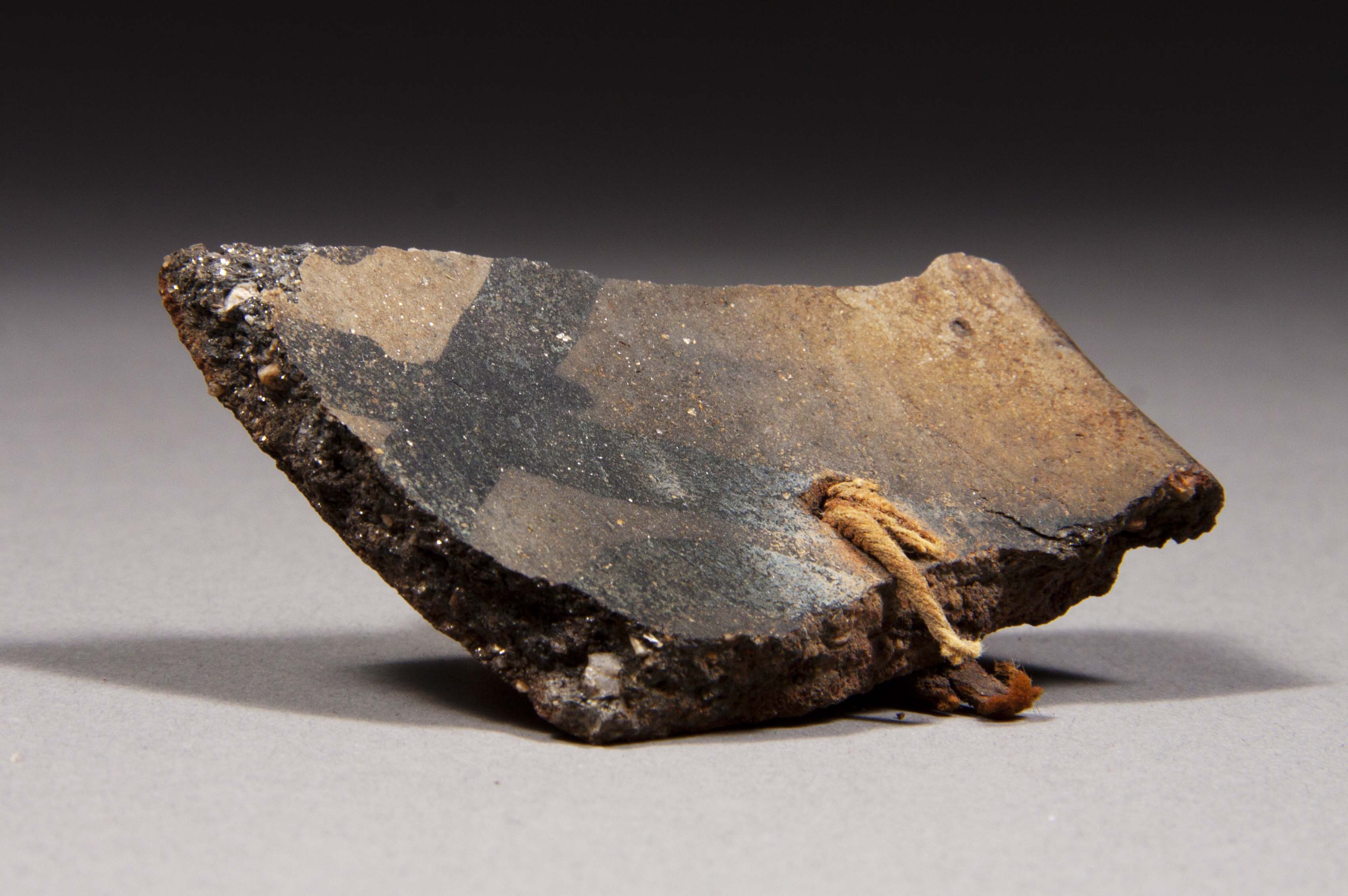
Interior rim of a Prescott Black-on-gray olla. Click the image to open the Prescott Gray Ware gallery.
Prescott Gray Ware was the pottery made and used by the Prescott culture, and is typically found around the San Francisco Mountains, west to the Walapai mountains, and south to the vicinity of Yarnell Hill.
Types include: Prescott Gray and Prescott Black-on-gray.
Archaeological Culture: Prescott
Date Range: A.D. 1000-1400.
Construction: By paddle and anvil.
Firing: Partially in an oxidizing atmosphere and partially in a reducing atmosphere.
Temper: Quartz sand, crushed rock and mica; mica flakes always show on both surfaces; temper more than 50% of core.
Surface Finish: Interior, irregular and bumpy; exteriors smoothed; compacted.
Surface Color: Exterior jars: brown or red; interior jars: generally gray, occasionally red; interior bowls: gray; exterior bowls: gray, frequently pinkish, or reddish tint.
Forms: Bowls, jars, dippers and scoops.
Vessel Thickness: 5.1 mm to 8 mm; average about 6.5 mm (bowls); 8.9 to 10.6 mm; average about 10 mm (jars).
Decoration: When present, painted with simple designs made with organic black paint.
Compiled from the following sources:
Colton, Harold. (1958) Pottery Types of the Southwest. Museum of Northern Arizona Ceramic Series No. 3D. Flagstaff, Arizona.
Compiled by:
April Peters, Northern Arizona University Anthropology Laboratories.
Additional Information:
Additional information on Prescott Gray Ware can be found in the 2001 Northern Arizona University Ceramic Manual (link opens in new window).
